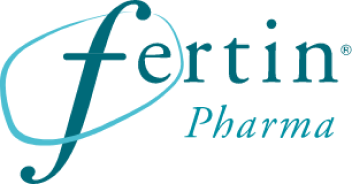Dose-dependent effects of oral cannabidiol and delta-9-tetrahydrocannabinol on serum anandamide and related N-acylethanolamines in healthy volunteers
Timothy A Couttas 1, Carola Boost 2 3, Franziska Pahlisch 2, Eliska B Sykorova 1 2, Juliane K Mueller 2 4, Beverly Jieu 1, Judith E Leweke 1 5, Inga Dammann 2 3, Anna E Hoffmann 1 3, Martin Loeffler 6, Oliver Grimm 4 6, Frank Enning 2 7, Herta Flor 6, Andreas Meyer-Lindenberg 2, Dagmar Koethe 1, Cathrin Rohleder 1 2 3, F Markus Leweke 8 2
- 1Brain and Mind Centre, The University of Sydney, Camperdown, New South Wales, Australia.
- 2Dept. of Psychiatry and Psychotherapy, Central Institute of Mental Health, Mannheim, Germany.
- 3Endosane Pharmaceuticals GmbH, Berlin, Germany.
- 4Dept. of Psychiatry, Psychosomatics and Psychotherapy, Goethe-Universitat Frankfurt am Main, Frankfurt am Main, Germany.
- 5Dept. of Psychiatry and Psychotherapy, University of Goettingen, Goettingen, Germany.
- 6Dept. of Cognitive and Clinical Neuroscience, Central Institute of Mental Health, Mannheim, Germany.
- 7Dept. of Psychosomatic Medicine and Psychotherapy, Central Institute of Mental Health, Mannheim, Germany.
- 8Brain and Mind Centre, The University of Sydney, Camperdown, New South Wales, Australia markus.leweke@sydney.edu.au.
Affiliationer
Background: The mental health benefits of cannabidiol (CBD) are promising but can be inconsistent, in part due to challenges in defining an individual’s effective dosage. In schizophrenia, alterations in anandamide (AEA) concentrations, an endocannabinoid (eCB) agonist of the eCB system, reflect positively on treatment with CBD. Here, we expanded this assessment to include eCBs alongside AEA congeners, comparing phytocannabinoids and dosage in a clinical setting.
Methods: Liquid chromatography-tandem mass spectrometry quantified changes in serum levels of AEA, 2-arachidonoylglycerol (2-AG), alongside AEA-related compounds oleoylethanolamide (OEA) and palmitoylethanolamide (PEA), which were attained from two independent, parallel-designed, clinical trials investigating single, oral CBD (600 or 800 mg), delta-9-tetrahydrocannabinol (Δ9-THC, 10 or 20 mg) and combination administration (CBD|800 mg+Δ9-THC|20 mg) in healthy volunteers (HVs, n=75). Concentrations were measured at baseline (t=0), 65 and 160 min post administration.
Results: CBD-led increases in AEA (1.6-fold), OEA and PEA (1.4-fold) were observed following a single 800 mg (pcorr<0.05) but not 600 mg dosage. Declining AEA was observed with Δ9-THC at 10 mg (-1.3-fold) and 20 mg (-1.4-fold) but restored to baseline levels by 160 min. CBD+Δ9-THC yielded the highest increases in AEA (2.1-fold), OEA (1.9-fold) and PEA (1.8-fold) without reaching a maximal response.
Conclusion: CBD-administered effects towards AEA, OEA and PEA are consistent with phase II trials reporting clinical improvement for acute schizophrenia (CBD≥800 mg). Including Δ9-THC appears to enhance the CBD-induced response towards AEA and its congeners. Our results warrant further investigations into the potential of these lipid-derived mediators as metabolic measures for CBD dose prescription and co-cannabinoid administration.
